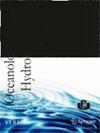埃及Manzala湖底栖无脊椎动物群落放射性污染的生物监测
IF 1
4区 环境科学与生态学
Q4 OCEANOGRAPHY
引用次数: 0
摘要
Manzala湖是埃及尼罗河三角洲最大的湖泊,人类活动频繁。近年来,由于农业、工业和城市污水排放的显著增加,湖泊的生态状况受到了影响。监测Manzala湖水质的一个有价值的工具是无脊椎动物物种对各种污染的敏感性,例如放射性污染。2020年,在水、沉积物和底栖无脊椎动物样本中测量了放射性核素镭-226 (226Ra)、钍-232 (232Th)、钾-40 (40K)和铯-137 (137Cs)的活性浓度。评估底栖生物群落的空间分布与放射性核素的生物积累,以确定可能的关系。发现了30个底栖无脊椎动物分类群。数据表明,水中放射性核素的平均活度浓度为40K > 232Th > 226Ra > 137Cs,沉积物和底栖无脊椎动物中放射性核素的平均活度浓度为40K > 226Ra > 232Th > 137Cs。腹足类和介形虫类是该湖泊底栖动物的主要类群,与放射性核素浓度最高有关。226Ra活性最高的位点以带壳底栖生物为主,137Cs活性最高的位点以软体生物为主。本文章由计算机程序翻译,如有差异,请以英文原文为准。
Biomonitoring of radioactive contamination using benthic invertebrate communities in Manzala Lake, Egypt
Abstract Manzala Lake, the largest in Egypt’s Nile Delta, has significant human activity. The Lake’s ecological condition has recently been impacted by a significant increase in agricultural, industrial, and urban wastewater discharge. A valuable tool for monitoring the water quality of Manzala Lake is the sensitivity of invertebrate species to various types of pollution, such as radioactive contamination. Activity concentrations of radionuclides Radium-226 (226Ra), Thorium-232 (232Th), Potassium-40 (40K), and Caesium-137 (137Cs) were measured in water, sediments and benthic invertebrate samples in 2020. The benthic community’s spatial distribution and the radionuclides’ bioaccumulation were evaluated to determine possible relationships. Thirty taxa of benthic invertebrates were recognised. The data illustrated that the mean activity concentration of radionuclides in water was in the order of 40K > 232Th > 226Ra > 137Cs, which changed into 40K > 226Ra > 232Th > 137Cs in the sediment and benthic invertebrates. Gastropoda and Ostracoda are the dominating groups of benthos in the lake and are related to the highest concentrations of radionuclides. The benthos species with shells dominated at the sites with the highest activity concentration of 226Ra, while soft-bodied organisms dominated in sites with the highest average 137Cs activity in these samples.
求助全文
通过发布文献求助,成功后即可免费获取论文全文。
去求助
来源期刊
CiteScore
1.70
自引率
11.10%
发文量
8
审稿时长
>12 weeks
期刊介绍:
Oceanological and Hydrobiological Studies is an international journal published by the Institute of Oceanography, University of Gdańsk in Poland. The journal has 4 issues per year and contains papers on all aspects of the marine environment and hydrobiology. All manuscripts are reviewed by editors and independent experts. Based on the referees'' recommendations, the Editor will make a decision on whether to accept a contribution. All articles are published in English. The journal is open to all matters concerning the water environment, thus providing the readers with a wide spectrum of topics in every issue.

 求助内容:
求助内容: 应助结果提醒方式:
应助结果提醒方式:


